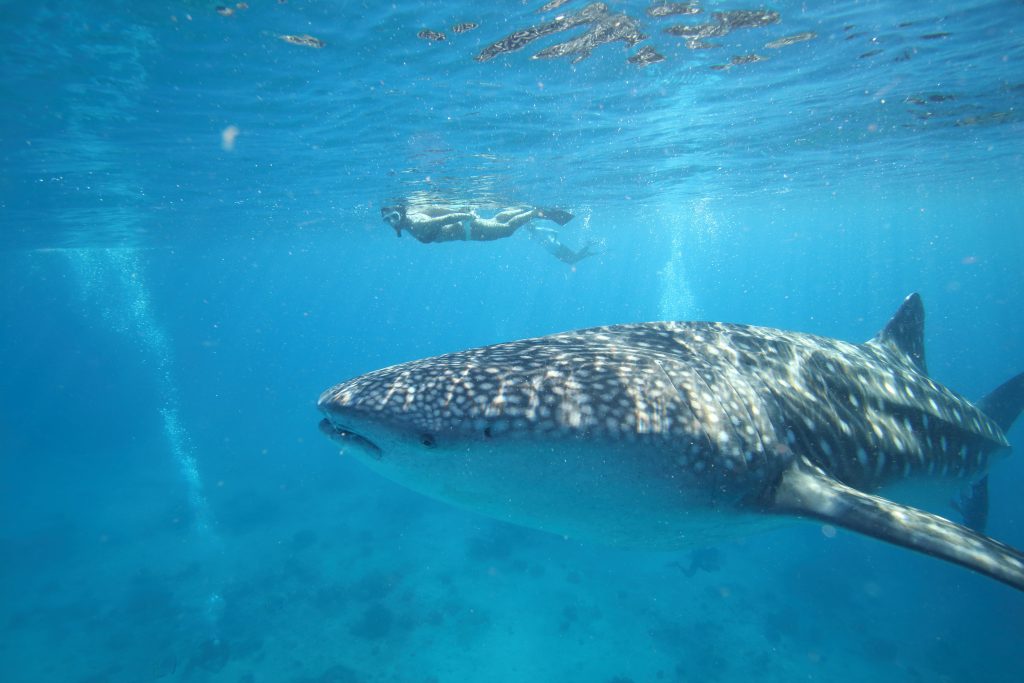
Here’s what it’s like diving with whale sharks in La Paz, Mexico
As the boat skimmed across the water, a massive shadow rose from the depths below.
“Shark! Shark!” Cristian yelled, and cut the engine.
Moments later, an ominous, black dorsal fin sliced through the surface. Seated on the edge of the boat, I fumbled for my mouthpiece and adjusted my snorkel mask. Then, taking a final shaky breath, I jumped.
At first, I saw nothing. On an overcast day in La Paz, Mexico, even at the surface the water was as cloudy as the sky above. The murkiness limited my visibility to a mere two feet.
But suddenly, the light shifted. And then I saw it.
Face to fin with the world's biggest fish
Like something out of a horror flick, in a matter of seconds, I was face to face with the largest fish in the world. Despite my love of the ocean, I have an irrevocable fear of deep water and everything that lurks below.
Growing up and spending my summers in Muskoka, even locking eyes with a large-mouthed bass or a Northern pike was enough to send me flailing wildly back to shore. For that reason alone, I’d never scuba dived or snorkelled. And on rare occasions when I ventured past my hips for a swim, I’d pictured this moment one thousand times; a lone, vicious shark appearing from the deep and ripping me to bloody shreds.
Underwater, time seemed to slow down while my heartbeat sped up. Frozen, I watched through my mask as a whale shark approximately 30 feet in length glided past, close enough that I could touch it. I didn’t scream and fill my breathing tube with saltwater and drown in a watery grave like I always imagined.
Instead, I silently kicked my flippers and swam side by side with this gentle, polka-dotted giant.
Whale sharks, despite their massive stature and wide mouths, are among the most docile of their species. Filter feeders, their cavernous mouths are lined with about 300 super tiny teeth, allowing for a generous scoop of plankton and small fish, which is their primary diet. They can live anywhere from 80 to 130 years, and have been around since the Jurassic period.
In La Paz, whale shark tours are available from October through May and can be arranged through a certified guide. Just two hours north of Los Cabos, La Paz is the capital of Baja California Sur, a Mexican state on the Baja California peninsula. Whale shark season in this area typically runs from the winter into early spring, making this an excellent time for a chance encounter.
Just as quickly as it’d appeared, after two minutes of our synchronized swim, the shark picked up speed and continued on its own trajectory into the sea.
Popping up to the surface, I was met with cheers from the rest of my dive group.
“That was amazing! Go again?” Christian yelled.
“I think I’m good,” I yelled back, and started a speedy front crawl back to the boat—because after what I just witnessed, who knows what else might lie beneath?

